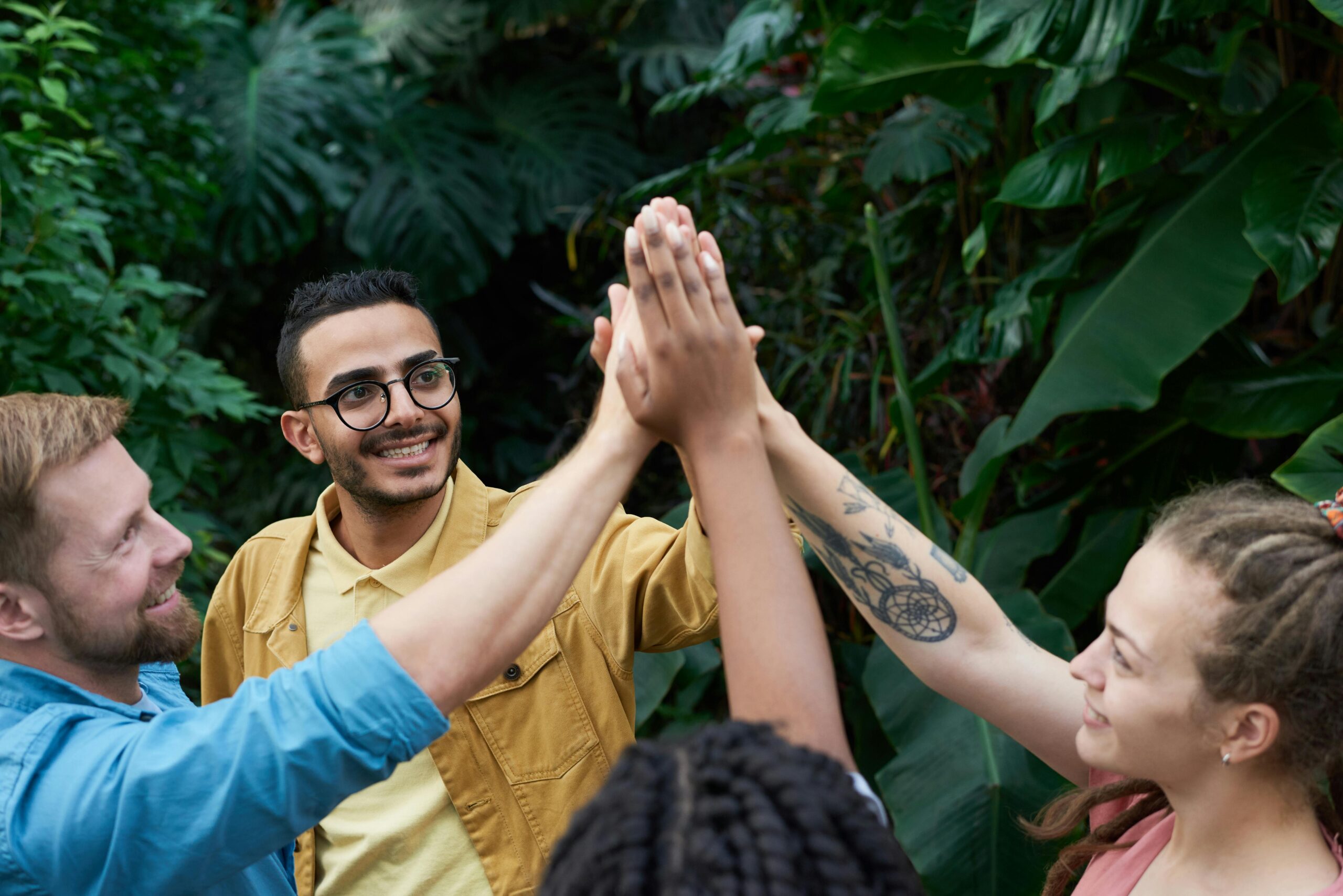In an age dominated by screens and algorithms, we’re witnessing a profound cultural shift: the reenchantment of our natural world.
For centuries, humanity has been on a journey of disenchantment—a process that began with the Enlightenment and accelerated through industrialization. We stripped nature of its mystery, reducing forests to lumber resources, oceans to fishing grounds, and mountains to mining opportunities. The poet William Wordsworth lamented this transformation centuries ago, but today, something remarkable is happening. People everywhere are rediscovering the magic that was always there, hidden beneath layers of scientific reductionism and utilitarian thinking.
This reenchantment isn’t about abandoning reason or science. Rather, it’s about expanding our relationship with the natural world beyond purely transactional or analytical frameworks. It’s about recognizing that a forest can be both a carbon sink and a cathedral of living wonder. A river can be measured in cubic meters per second and simultaneously experienced as a living entity with its own rhythm and story.
🌿 The Disenchantment That Preceded Our Awakening
To understand where we’re going, we must first acknowledge where we’ve been. The philosopher Max Weber coined the term “disenchantment of the world” to describe the intellectual transformation that accompanied modernity. As science explained natural phenomena through mechanistic principles, the world seemed to lose its inherent meaning and mystery.
Lightning became electrical discharge rather than divine fury. The ocean’s tides became gravitational physics rather than the breathing of a living entity. While these scientific understandings brought tremendous benefits—medicine, technology, food security—they also created an unintended consequence: a profound alienation from the natural world.
This alienation has manifested in our environmental crises. When nature becomes merely a collection of resources rather than a community to which we belong, exploitation becomes inevitable. The statistics are sobering: we’ve lost 68% of wildlife populations since 1970, deforested millions of acres annually, and pushed countless species toward extinction.
But within this crisis lies the seed of transformation. Sometimes we must lose something precious before we recognize its true value.
✨ What Does Reenchantment Actually Mean?
Reenchantment of nature isn’t about rejecting scientific knowledge or retreating into pre-modern superstition. It’s about cultivating a richer, more multidimensional relationship with the living world around us. It means allowing ourselves to feel awe, wonder, and genuine connection alongside our scientific understanding.
When you watch a murmuration of starlings—thousands of birds moving in perfect synchronicity across the autumn sky—you can appreciate the mathematical models that describe their collective behavior while simultaneously experiencing pure aesthetic and emotional transcendence. Both experiences are valid. Both are real.
Reenchantment involves recognizing what biologist Andreas Weber calls “enlivenment”—the understanding that we live in a world of subjects, not objects. Trees aren’t just standing timber; they’re organisms communicating through fungal networks, nurturing their offspring, and responding to threats with sophisticated chemical signals. When scientist Suzanne Simard discovered the “wood wide web” of forest communication, she wasn’t diminishing the mystery of forests—she was deepening it.
The Language of Connection 🍃
Indigenous cultures worldwide have maintained enchanted relationships with nature throughout the modern era. The Maori concept of “kaitiakitanga” describes humans as guardians rather than owners of the land. The Aboriginal Australian understanding of “Country” encompasses a living, conscious relationship between people and place. These aren’t primitive beliefs to be patronized—they’re sophisticated ecological philosophies that modern environmentalism is only beginning to appreciate.
Robin Wall Kimmerer, a botanist and member of the Citizen Potawatomi Nation, writes beautifully about how language shapes our relationship with nature. In English, we use “it” to describe living beings like trees and rivers, automatically relegating them to the status of objects. In her native language, different pronouns honor the personhood of other living beings. This linguistic difference reflects and reinforces entirely different relationships with the natural world.
🌍 The Cultural Movement Toward Reenchantment
We’re witnessing a grassroots renaissance of nature connection across demographics and cultures. Forest bathing—the Japanese practice of shinrin-yoku—has gained worldwide popularity as research confirms what practitioners have long known: immersion in forests measurably reduces stress hormones, boosts immune function, and improves mental health.
The rise of citizen science projects demonstrates how technology can facilitate rather than hinder nature connection. Apps that help identify birds, track wildlife, or monitor environmental changes transform casual nature observers into active participants in ecological knowledge-building. When someone uses their phone to identify a mushroom species they’ve never encountered, technology becomes a bridge to deeper engagement rather than a barrier.
Nature-Based Social Movements 🌱
Environmental activism has evolved beyond policy advocacy into cultural movements that center emotional and spiritual connection with nature. The Rights of Nature movement has achieved remarkable legal victories, with rivers in New Zealand, India, and Colombia granted legal personhood. Ecuador’s constitution recognizes the rights of Pachamama (Mother Earth). These legal frameworks would have been inconceivable without a broader cultural shift toward recognizing nature’s intrinsic value and agency.
Youth climate movements, exemplified by activists like Greta Thunberg and the Sunrise Movement, combine scientific urgency with emotional authenticity. They speak about climate change not just as an abstract policy challenge but as a violation of their relationship with their planetary home. This is enchantment in action—relating to Earth as kin rather than commodity.
🌸 Personal Practices for Cultivating Enchantment
Reenchanting our relationship with nature begins with individual practice. You don’t need to live in wilderness or leave your daily life behind. Small, consistent practices can profoundly shift your experience of the natural world, even in urban environments.
Sit Spots and Sensory Awareness
One of the most powerful practices is establishing a “sit spot”—a place in nature you visit regularly, ideally daily, to simply observe and be present. This could be a park bench, a backyard corner, or a spot by a river. The practice isn’t about dramatic experiences; it’s about developing intimate familiarity with one place across seasons and weather.
Over time, you begin noticing patterns: which birds arrive when, how plants respond to rainfall, the subtle shift in light quality as seasons change. This depth of attention cultivates relationship. The place becomes not “a spot in the park” but a living community you know personally.
Learning the Names 🦋
There’s genuine power in learning the names of beings around you. When “that small brown bird” becomes a song sparrow, when “those yellow flowers” become dandelions, when “that tall tree” becomes a sycamore—the world becomes populated with individuals rather than generic categories.
Field guides, nature apps, and local naturalist groups can help with identification. But the goal isn’t accumulating facts—it’s building relationship. When you know that the robin singing in your yard returns from the same family line year after year, when you understand that the wild garlic in the spring is both food and medicine, the world becomes richer and more alive.
Ritual and Reciprocity
Many people find that small rituals deepen their sense of connection with nature. This might be as simple as speaking a word of gratitude before harvesting herbs from your garden, leaving offerings of seeds for birds, or marking seasonal changes with personal ceremonies.
Robin Wall Kimmerer emphasizes the principle of reciprocity in human-nature relationships. Rather than seeing nature as a resource to extract or even a museum to admire from distance, reciprocity asks: what can I give back? This might take the form of restoration work, advocacy, or simply tending to your local place with care and attention.
🌊 Scientific Developments That Support Reenchantment
Paradoxically, some of the most exciting developments in reenchantment come from cutting-edge science itself. Rather than stripping mystery from nature, contemporary biological research is revealing depths of complexity, intelligence, and interconnection that earlier mechanistic models never imagined.
The Hidden Life of Trees
Peter Wohlleben’s bestselling book “The Hidden Life of Trees” popularized scientific discoveries about forest ecology that read like fantasy. Trees recognize their offspring and send them extra nutrients through fungal networks. They communicate about insect attacks through chemical signals. Old “mother trees” serve as hubs in forest networks, supporting entire communities of younger trees.
This research doesn’t anthropomorphize forests—it recognizes sophisticated adaptive behaviors that challenge our assumptions about intelligence and communication. The forest emerges not as a collection of individual trees competing for resources but as a superorganism characterized by cooperation and mutual support.
The Intelligence of Plants and Fungi
Plant neurobiology research has documented that plants can learn, remember, and make decisions—without brains or nervous systems. Mimosa plants learn to stop closing their leaves in response to repeated non-threatening stimuli, demonstrating habituation and memory. Venus flytraps count touches before closing, distinguishing false alarms from genuine prey.
Mycologist Paul Stamets has revealed how fungal mycelial networks function as natural communication and nutrient distribution systems—a biological internet predating human technology by hundreds of millions of years. These discoveries don’t diminish the wonder of forests; they magnify it exponentially.
🏙️ Urban Enchantment: Finding Magic in Cities
More than half the world’s population lives in cities, and this proportion continues growing. Urban reenchantment represents one of the most important frontiers in rebuilding human-nature relationships. Cities are ecosystems too—often surprisingly biodiverse ones.
Peregrine falcons nest on skyscrapers, hunting pigeons in aerial chases rivaling any nature documentary. Coyotes have colonized urban areas across North America, adapting to city life with remarkable intelligence. Urban forests provide habitat for countless species while offering city dwellers accessible nature connection.
Urban gardening movements, from community gardens to guerrilla gardening to edible landscapes, transform cities into productive ecosystems while building community connections. When neighbors tend a shared garden, they’re not just growing food—they’re cultivating relationship with each other and with the more-than-human world.
Rewilding City Spaces 🌿
The rewilding movement has entered cities with projects that restore native ecosystems in urban areas. Green roofs provide habitat while managing stormwater. Bioswales filter runoff while supporting pollinators. Daylighting buried streams restores urban waterways as living arteries of city ecosystems.
These projects reenchant cities by making visible the living systems that underlie urban infrastructure. When you understand that your city is built on top of watersheds, migration routes, and native ecosystems that persist despite development, the urban landscape becomes legible in entirely new ways.
💚 The Psychological and Spiritual Dimensions
Nature connection isn’t just environmentally important—it’s psychologically and spiritually essential for human wellbeing. The mental health crisis in developed nations correlates strongly with disconnection from nature. We evolved in intimate relationship with the natural world, and that evolutionary heritage shapes our deepest needs.
Research confirms what many experience intuitively: time in nature reduces anxiety and depression, improves attention and creativity, and increases feelings of meaning and connection. Ecopsychology explores how environmental degradation and human psychological distress are interconnected—healing one facilitates healing the other.
Nature as Mirror and Teacher
Natural patterns and cycles offer powerful metaphors and teachings for human life. The forest teaches about death and renewal, succession and resilience. Rivers teach about flow and persistence. Mountains teach about timescales beyond human comprehension. These aren’t just poetic notions—they’re genuine sources of wisdom and perspective.
Many spiritual traditions recognize nature as sacred, not as supernatural enchantment but as recognition of intrinsic value and mystery. You don’t need religious belief to experience awe watching a thunderstorm, wonder observing an ant colony, or peace sitting beside a river. These experiences arise from direct encounter with the sacred dimension of the ordinary natural world.

🌟 Moving Forward: A Living Future
The reenchantment of nature isn’t nostalgia for a pre-modern past. It’s the foundation for a genuinely sustainable future. When we experience nature as alive, meaningful, and valuable in itself—not just as resources for human use—protection becomes not a sacrifice but an obvious expression of relationship and reciprocity.
This shift is already changing how we approach environmental challenges. Rather than purely technical solutions focused on efficiency and resource management, we’re seeing approaches centered on regeneration, restoration, and relationship. Rather than asking “how can we sustain current extraction levels?” we’re asking “how can we participate in the flourishing of living systems?”
The reenchantment of nature doesn’t require abandoning science, technology, or modern life. It requires expanding our modes of knowing and relating beyond the purely analytical and utilitarian. It means recovering capacities for wonder, reciprocity, and kinship that industrialization suppressed but never eliminated.
Each of us can participate in this cultural transformation through how we live daily life. By learning the names of birds in our neighborhood, tending gardens, supporting conservation efforts, consuming more mindfully, and spending time simply being present in nature, we weave ourselves back into the community of life.
The reenchantment of our natural world isn’t happening in some distant future—it’s happening now, in millions of personal and collective transformations. Every moment we choose presence over distraction, connection over consumption, and wonder over indifference, we participate in recovering the magic that was always there. The natural world was never truly disenchanted—we were simply looking through frameworks that couldn’t perceive its aliveness. As we recover our capacity for genuine relationship with nature, we discover we’re not reenchanting the world at all. We’re simply remembering how to see what was always true: that we live on a magnificent, mysterious, living planet populated by millions of species worthy of our attention, respect, and love. 🌎
Toni Santos is an eco-spirituality researcher and planetary healing writer exploring how earth-based rituals, nature-centred philosophy and sacred ecology reconnect humanity with the living planet. Through his work on environment, consciousness and ritual, Toni examines how our relationship with Earth influences our awakening and actions. Passionate about land-wisdom, ritual practice and ecological integration, Toni focuses on how spiritual life can emerge from ecological awareness and how healing flows from land, water and community. His work highlights the union of ecology, mind and spirit — guiding readers toward a more grounded, relational, and sacred life. Blending ritual studies, environmental philosophy and ecological design, Toni writes about the human-earth story — helping readers understand how living systems, community and meaning intertwine in planetary healing. His work is a tribute to: The sacred connection between humanity and Earth’s living systems The power of ritual to rekindle land-memory and collective renewal The vision of ecology as sacred, relational and transformational Whether you are a ritual practitioner, ecological thinker or planet-healer, Toni Santos invites you to explore the path of planetary awakening — one ritual, one ecosystem, one transformation at a time.




